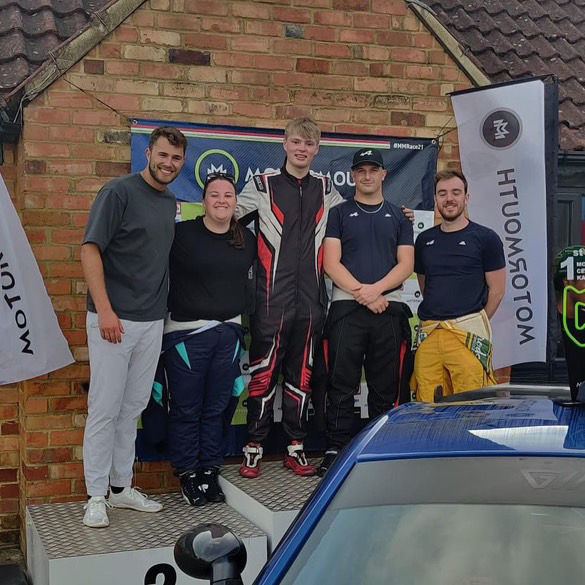What do the Premier League, Formula 1, and British Swimming all have in common? They trust Kymira’s infrared-infused products and sportswear to accelerate their athletes’ performance and reduce injury.
Every athlete is chasing an edge, to train harder, perform stronger, and recover faster. Kymira may have found it. As one of the world’s leading smart garment companies, Kymira’s infrared-powered textiles and sportswear are changing the way athletes practice, compete, and recover.
Their sportswear is now used on every continent around the world by Olympic athletes, international sports stars, elite teams, and recreational athletes.
Tim Brownstone, the CEO and founder of Kymira, says, “In Paris last year, 33 of our paying clients won medals, meaning that we would have ranked ninth if we were a country.”
“The Olympics were the first time when I was torn between patriotism and our customers. That was quite a cool moment to realise that we’ve got so many people using Kymira now that I’m torn between who I root for.”
So, how does the high-performing technology work?
The fabrics that make up Kymira clothing are powered by Celliant, a natural mineral blend that absorbs the body’s heat and converts it into infrared energy.
Brownstone says, “This is then re-emitted and penetrates about four centimetres into the wearer’s muscles, which triggers a number of different biochemical reactions that, from an athletic standpoint, will help prime the muscles to be less injury-prone and ready for activity.”
“It will also directly enhance performance if you’re wearing the products during activity, and accelerate recovery post-exercise.”
This improved muscle function enhances an athlete’s capacity to perform at their highest peak, while the recovery effects allow athletes to sustain this for longer periods of time.
“It will directly enhance your performance the first time wearing it, but we’re also looking at what the change is over the course of a season and how much we’re reducing injury rates,” says Brownstone.
“We’ve had some really amazing research from Loughborough and the University of Notre Dame, both confirming significant improvements in recovery scores, and an accelerated rate of the body adapting in response to training.”
An athlete’s schedule can be relentless with constant training, travel, and competitions, meaning recovery time can be hard to find. That’s why Kymira recommends constant use of their products.
“As a bare minimum, you know we sort of say half an hour before exercise, during exercise, and then two hours afterwards is kind of your ideal. Then if you’re a pro, 24/7.
“We have developed the range very strategically over the last four to five years. Pre-2021, it was largely just Lycra products and some accessories, but we’ve deliberately built out products like my t-shirt, hoodies, tracksuits, pyjamas, and bedsheets so that we can get as close to 24 hours a day.
“There is no consequence. You can’t wear it too much, and the more you wear it, the more benefit you’ll get.”
Over the years, more and more athletes have been spotted wearing Kymira sportswear, including England Rugby player Jonny May, and American sprinter Twanisha Terry, who donned it in an episode of the Netflix documentary series ‘Sprint’.
A company born from research about tomatoes has transformed the landscape of performance-enhancing kit.
“When I was 16 or 17, I’d just finished my first international sprint meets. I messed up my left knee for a couple of weeks afterwards, and I was just trying to find a way to get back on the track quicker,” says Brownstone.
“I came across a NASA research paper where they were using infrared lights to make tomatoes grow quicker in space. I thought, if it does that to tomatoes, maybe it will help my knee heal quicker.”
“That got me interested academically, and then I was looking to go down a route where I specialised in developing technology for wound dressings. Long story short, I didn’t know how to pay for it, so I set the business up to use a lesser-regulated market like sports to finance the translation of the technology into the medical side.”
Since then, Brownstone’s experienced several highlights, from partnering with Formula 1, NFL, and British Swimming to working with those whose dreams go beyond winning medals.
Brownstone says, “The technology will work regardless of who you are and what you’re doing. I’ll often say in non-sporting contexts, performance is relative and the technology doesn’t discriminate across our customer base.”
“Performance could be those medals won in Paris, or it could be helping a little old lady get to the shops, and walk her dog again, and it’s everything in between.
“When we help the mid-80-year-old who has had to give up playing golf but is now back to playing three rounds a week because that’s what she and her partner did together, and they loved it, those are the most meaningful stories.”
The Kymira technology has altered sportswear and is now making active moves to further improve the lives of others.
“For what I call our industrial athletes – so that’s engineers, retail workers, and just people on their feet all day long – just wearing our socks for example can make such a huge difference to the foot pain that they get daily, so we’re starting to gain more traction on the medical side,” says Brownstone.
Kymira’s infrared-powered sportswear is creating an impact. It’s allowing athletes to break records and recover quickly, while giving others their passions back.
Sidelines Recommends

Why the grass is always greener at Wimbledon
Before tennis stars step onto the courts at Wimbledon, months of work go into sowing the seeds of that success. This is how the Championships’ iconic courts are made. One of Wimbledon’s defining features, other than its friendly military stewards and of course, the…

“Fierce and feminine”: the women changing F1 on and off the track
Shannon Tobin’s journey from racing novice to working for a top F1 team shows how women are steering the future of motorsport.

The next step in wearable sport tech
Move over Whoop and Oura – Plantiga’s insole technology is transforming the way athletes analyse their movements and recover from injuries in sport. In an elite sport environment this competitive, every marginal gain counts. That’s why athletes are always looking for…




